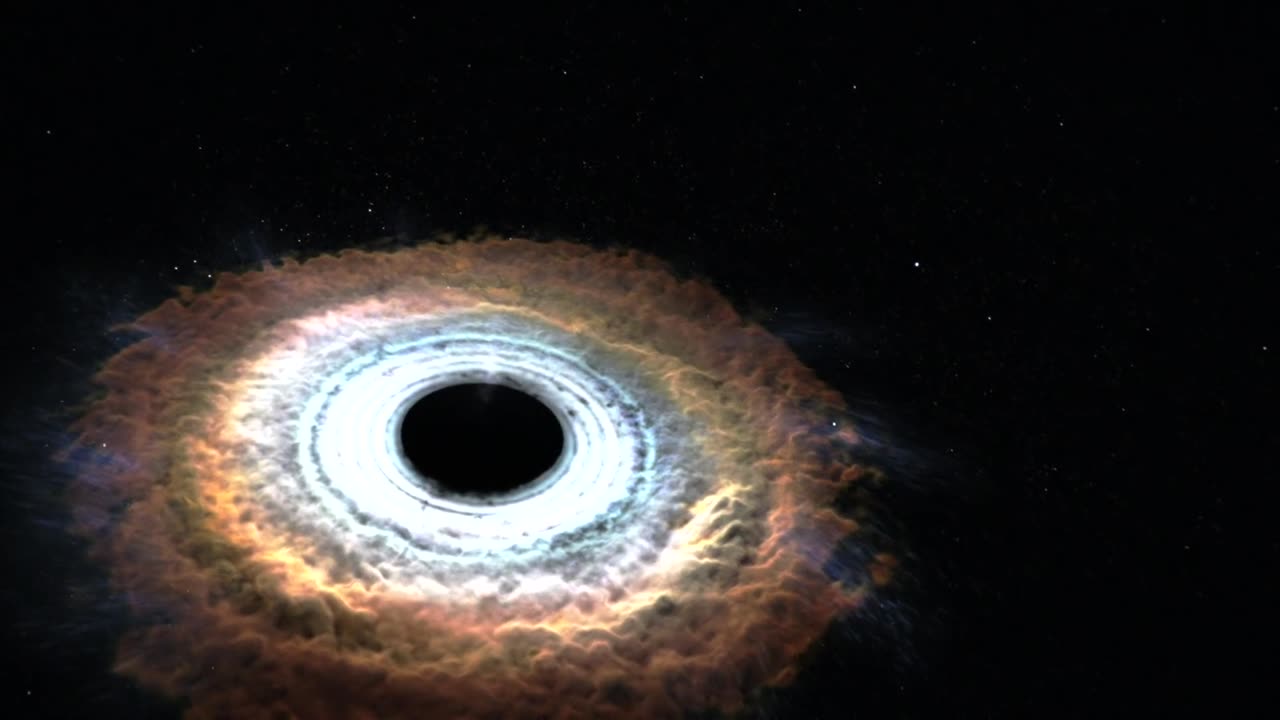Premium Only Content

NASA | Massive Black Hole Shreds Passing Star
This artist’s rendering illustrates new findings about a star shredded by a black hole. When a star wanders too close to a black hole, intense tidal forces rip the star apart. In these events, called “tidal disruptions,” some of the stellar debris is flung outward at high speed while the rest falls toward the black hole. This causes a distinct X-ray flare that can last for a few years. NASA’s Chandra X-ray Observatory, Swift Gamma-ray Burst Explorer, and ESA/NASA’s XMM-Newton collected different pieces of this astronomical puzzle in a tidal disruption event called ASASSN-14li, which was found in an optical search by the All-Sky Automated Survey for Supernovae (ASAS-SN) in November 2014. The event occurred near a supermassive black hole estimated to weigh a few million times the mass of the sun in the center of PGC 043234, a galaxy that lies about 290 million light-years away. Astronomers hope to find more events like ASASSN-14li to test theoretical models about how black holes affect their environments.
During the tidal disruption event, filaments containing much of the star's mass fall toward the black hole. Eventually these gaseous filaments merge into a smooth, hot disk glowing brightly in X-rays. As the disk forms, its central region heats up tremendously, which drives a flow of material, called a wind, away from the disk.
Music credit: Encompass by Mark Petrie from Killer Tracks.
This artist’s rendering illustrates new findings about a star shredded by a black hole. When a star wanders too close to a black hole, intense tidal forces rip the star apart. In these events, called “tidal disruptions,” some of the stellar debris is flung outward at high speed while the rest falls toward the black hole. This causes a distinct X-ray flare that can last for a few years. NASA’s Chandra X-ray Observatory, Swift Gamma-ray Burst Explorer, and ESA/NASA’s XMM-Newton collected different pieces of this astronomical puzzle in a tidal disruption event called ASASSN-14li, which was found in an optical search by the All-Sky Automated Survey for Supernovae (ASAS-SN) in November 2014. The event occurred near a supermassive black hole estimated to weigh a few million times the mass of the sun in the center of PGC 043234, a galaxy that lies about 290 million light-years away. Astronomers hope to find more events like ASASSN-14li to test theoretical models about how black holes affect their environments.
During the tidal disruption event, filaments containing much of the star's mass fall toward the black hole. Eventually these gaseous filaments merge into a smooth, hot disk glowing brightly in X-rays. As the disk forms, its central region heats up tremendously, which drives a flow of material, called a wind, away from the disk.
Music credit: Encompass by Mark Petrie from Killer Tracks.
-
 1:12:37
1:12:37
The Rubin Report
3 hours agoIs This What Caused Trump to Bomb Iran’s Nuclear Sites Now?
51.6K51 -
 LIVE
LIVE
Badlands Media
9 hours agoY-Chromes Ep. 38
756 watching -
 LIVE
LIVE
Rebel News
1 hour agoRebels in Ireland, Canada calls for Iran/US peace, Too hot for pools in Toronto | Rebel Roundup
419 watching -
 LIVE
LIVE
Flyover Conservatives
13 hours agoWho is Running the World? 76 NGOs that have Complete Immunity and are Robbing YOU Blind | Mel K
701 watching -

Neil McCoy-Ward
1 hour ago🚨 This Is VERY VERY Bad… (It's Happening)
11.3K1 -
 1:14:55
1:14:55
The Mel K Show
2 hours agoMORNINGS WITH MEL K - The Dismantling of the International Banking Cartel & The Hidden Hands of Global Tyranny 6/23/25
22.3K9 -
 DVR
DVR
The Shannon Joy Show
3 hours ago🔥🔥None Dare Call It ‘WAR’. Global Impact Of US Involvement InThe Israel/Iran Conflict, With Special Guest Michael Yon.🔥🔥
17.9K4 -
 35:25
35:25
Tudor Dixon
3 hours agoThe DNC in Disarray | The Tudor Dixon Podcast
21.6K2 -
 LIVE
LIVE
LFA TV
18 hours agoLFA TV ALL DAY STREAM - MONDAY 6/23/25
2,756 watching -
 1:01:11
1:01:11
VINCE
5 hours agoWhat’s Coming Next? The Answers Aren't Pretty | Episode 70 - 06/23/25
327K336